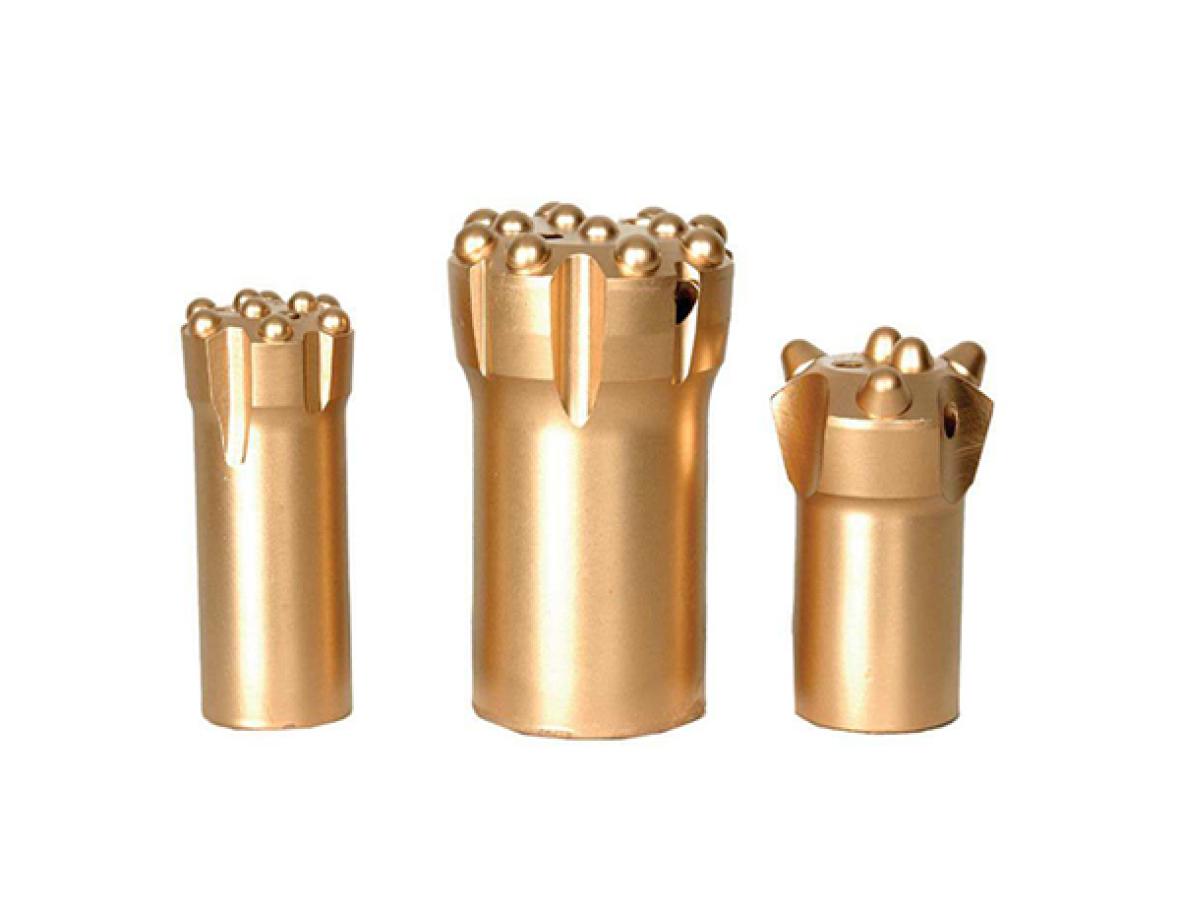Cerințe pentru unelte de foraj în operațiunile de forare a găurilor de sablare
When it comes to the field of rock drilling, especially for blasting operations, understanding the requirements for drilling bits and the drilled holes is paramount. Gaea Rock, a leader in the production of rock drilling bits, emphasizes the critical aspects of hole drilling, which are generally described by four main characteristics: diameter, depth, straightness, and stability.
1. Hole Diameter
The diameter of the drill hole is determined by its intended use. Many factors influence the choice of hole size in blasting operations. These include the desired size of the rock fragments after blasting, the type of blasting conducted, the quality requirements of the blasted rock (such as the smoothness of the fragment surfaces and the proportion of fines), and the allowable level of ground vibration during blasting. Large-diameter blasts, common in major quarries or large open-pit mines, can significantly reduce the cost of drilling and blasting per ton of rock. Underground drilling operations are limited by the available space, affecting equipment choice and hole size. For water well drilling, the diameter is dictated by the size of the casing or the diameter required by the pumping equipment. In the case of rock support holes, the choice of anchor bolt diameter is crucial.
2. Hole Depth
The depth of the hole is influenced by the rock drilling equipment used, with limited space often necessitating the use of shorter drill bits with threaded connections. In blasting operations, whether horizontal or vertical, the depth drilled is usually slightly greater than the theoretical depth or bench height to ensure efficient blasting. Deep drilling requirements (50-70 meters or deeper) often utilize down-the-hole (DTH) drilling instead of top hammer drilling for better energy transfer and dust extraction efficiency in deep hole conditions.
3. Hole Straightness
The straightness of the drill hole varies significantly depending on the type of rock, environmental conditions, the chosen excavation method, and the drilling equipment used. The weight of the drill string can also affect the deviation of the hole in horizontal and inclined drilling. Maintaining straightness in blast holes is crucial for accurate charging and optimal blasting results. For certain drilling applications, such as utility or cable holes, high straightness is essential to ensure smooth installation of pipes and pumps. The use of guiding equipment, such as guide bits, guide rods, and guide tubes, can improve hole straightness. Factors such as the alignment of the feed beam and the accuracy of the hole's start also affect drilling direction, highlighting the need for precise adjustments. Studies indicate that over 50% of hole deviation can be attributed to improper feed beam alignment and poor starting point selection.
4. Hole Stability
Another critical requirement for drilled holes is maintaining their stability until they are charged for blasting or used for other purposes. In conditions where drilling through loose or soft rock, which tend to collapse or clog the hole, the use of drill casings or tubes to support the hole is essential.
Gaea Rock's commitment to excellence in rock drilling technology underscores the importance of understanding these fundamental drilling requirements. By focusing on diameter, depth, straightness, and stability, Gaea Rock ensures that its products and practices meet the highest standards for efficiency, safety, and environmental stewardship in rock drilling and blasting operations.





